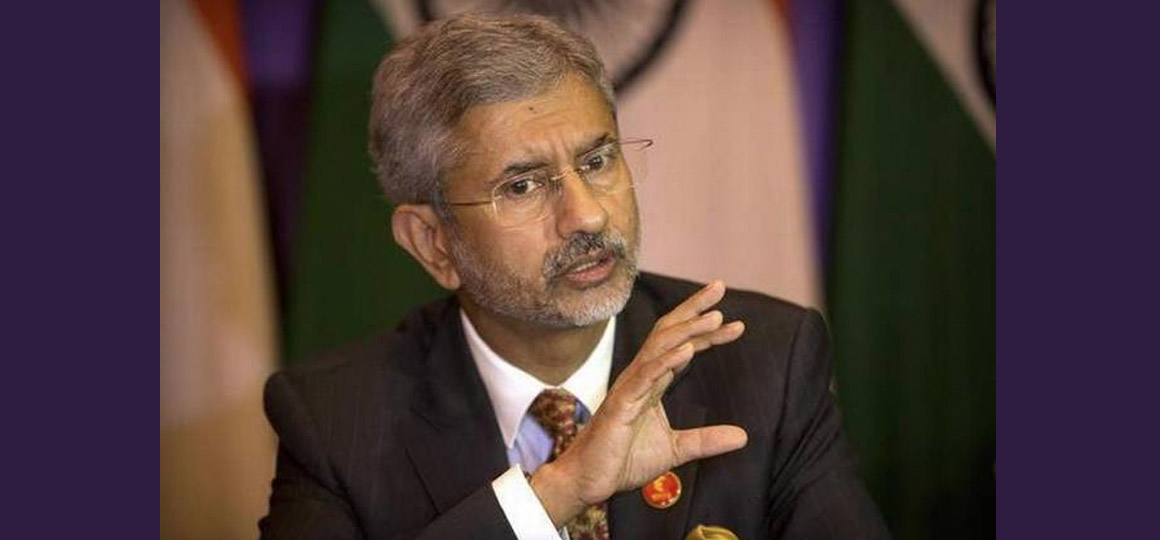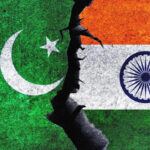Tehran seeks Delhi’s assistance in the project which will change the “geo-economy” of region
India wants Chabahar port to be included in the 13-nation International North South Transport Corridor that extends from India to Russia, and expand INSTC membership by including Afghanistan and Uzbekistan, said External Affairs Minister S. Jaishankar and Ports and Shipping Minister Mansukh Mandaviya on Thursday.
Pitching for Chabahar in the INSTC which goes via Iran’s biggest port Bandar Abbas, Mr. Jaishankar proposed that the land route via Kabul and Tashkent would form the INSTC’s “Eastern corridor”.
“Establishing an eastern corridor through Afghanistan would maximise its potential. India has also proposed the inclusion of Chabahar in the INSTC route. I am hopeful that during the INSTC Coordination Council meeting, member states would agree to the expansion of the INSTC route to include the Chabahar Port and also agree on expanding the membership of this project,” Mr. Jaishankar said at a “Chabahar Day” event organised as part of the 3-day “Maritime India” summit that was conducted virtually.
The event saw participation from several regional officials including infrastructure Ministers from Afghanistan, Armenia, Iran, Kazakhstan, Russia and Uzbekistan. The Port has already handled 123 vessels and 18 lakh tons of cargo, said an official statement issued after the conference, which include trans-shipments from “Russia, Brazil, Thailand, Germany, Ukraine and the UAE”.
Predicting that Chabahar will change the “geo-economy” of the region, Iran’s Minister of Roads and Urban Development Mohammed Eslami called for assistance from India in developing the project, both through the provision of cranes and other equipment at the port as well as rail tracks, signal and switching equipment for the Chabahar-Zahedan railway project. In a letter last November, Iran had also asked India to activate the $150-million credit line it offered during Iranian President Rouhani’s visit to Delhi in 2018 for the project.
Credit lines
“I hope we can enjoy more credit lines allocated by India for equipping the port as well as completion of infrastructure projects of transport networks related to it,” Mr. Eslami said at the conference.
“India has participated in the first phase of development of Shahid Beheshti port of Chabahar and we are now witnessing the supplying of equipment. It deems necessary for the Indian operator to facilitate the process of supplying the remaining equipment,” he said.
India has already provided the Shahid Beheshti port with two cranes, and promised a further six, but is not at present part of the 628-km railway project, which Iran decided to develop on its own last year.
In a reply to Parliament in February, the Ministry of External Affairs said it “remains engaged” in discussions on the subject of the 2016 MoU on the railway project, which is believed to have been stalled for the past few years due to sanctions from the U.S. under the Trump administration. New Delhi’s push to include Chabahar in the INSTC could also have been made with an eye on the new Biden administration’s push for restoring talks with Iran on the JCPOA nuclear agreement, and the possible easing of some sanctions.
Asked about the possibility of including Chabahar in the corridor, an Iranian official said Iran would “welcome it”, but that procedurally, it is the INSTC governing council that would have to review the proposal and clear it.
Multi-mode network
The INSTC project was originally decided between India, Iran and Russia in 2000 in St Petersburg, and subsequently included 10 other central Asian and west Asian countries: Azerbaijan Armenia, Kazakhstan, Kyrgyz Republic, Tajikistan, Turkey, Ukraine, Belarus, Oman, Syria and Bulgaria as an observer. It envisions a 7,200-km-long multi-mode network of ship, rail and road route for transporting freight, aimed at reducing the carriage cost between India and Russia by about 30% and bringing down the transit time from 40 days by more than half.
Russian Deputy Industry and Trade Minister Choriyev Ergashevich called the INSTC a “very important corridor for the development of freight traffic in the region”, and suggested that member countries could also work on the joint design and construction of container ships and railway lines together.
India pushes for Chabahar in India-Iran-Russia INSTC corridor
Tehran seeks Delhi’s assistance in the project which will change the “geo-economy” of region
India wants Chabahar port to be included in the 13-nation International North South Transport Corridor that extends from India to Russia, and expand INSTC membership by including Afghanistan and Uzbekistan, said External Affairs Minister S. Jaishankar and Ports and Shipping Minister Mansukh Mandaviya on Thursday.
Pitching for Chabahar in the INSTC which goes via Iran’s biggest port Bandar Abbas, Mr. Jaishankar proposed that the land route via Kabul and Tashkent would form the INSTC’s “Eastern corridor”.
“Establishing an eastern corridor through Afghanistan would maximise its potential. India has also proposed the inclusion of Chabahar in the INSTC route. I am hopeful that during the INSTC Coordination Council meeting, member states would agree to the expansion of the INSTC route to include the Chabahar Port and also agree on expanding the membership of this project,” Mr. Jaishankar said at a “Chabahar Day” event organised as part of the 3-day “Maritime India” summit that was conducted virtually.
The event saw participation from several regional officials including infrastructure Ministers from Afghanistan, Armenia, Iran, Kazakhstan, Russia and Uzbekistan. The Port has already handled 123 vessels and 18 lakh tons of cargo, said an official statement issued after the conference, which include trans-shipments from “Russia, Brazil, Thailand, Germany, Ukraine and the UAE”.
Predicting that Chabahar will change the “geo-economy” of the region, Iran’s Minister of Roads and Urban Development Mohammed Eslami called for assistance from India in developing the project, both through the provision of cranes and other equipment at the port as well as rail tracks, signal and switching equipment for the Chabahar-Zahedan railway project. In a letter last November, Iran had also asked India to activate the $150-million credit line it offered during Iranian President Rouhani’s visit to Delhi in 2018 for the project.
Credit lines
“I hope we can enjoy more credit lines allocated by India for equipping the port as well as completion of infrastructure projects of transport networks related to it,” Mr. Eslami said at the conference.
“India has participated in the first phase of development of Shahid Beheshti port of Chabahar and we are now witnessing the supplying of equipment. It deems necessary for the Indian operator to facilitate the process of supplying the remaining equipment,” he said.
India has already provided the Shahid Beheshti port with two cranes, and promised a further six, but is not at present part of the 628-km railway project, which Iran decided to develop on its own last year.
In a reply to Parliament in February, the Ministry of External Affairs said it “remains engaged” in discussions on the subject of the 2016 MoU on the railway project, which is believed to have been stalled for the past few years due to sanctions from the U.S. under the Trump administration. New Delhi’s push to include Chabahar in the INSTC could also have been made with an eye on the new Biden administration’s push for restoring talks with Iran on the JCPOA nuclear agreement, and the possible easing of some sanctions.
Asked about the possibility of including Chabahar in the corridor, an Iranian official said Iran would “welcome it”, but that procedurally, it is the INSTC governing council that would have to review the proposal and clear it.
Multi-mode network
The INSTC project was originally decided between India, Iran and Russia in 2000 in St Petersburg, and subsequently included 10 other central Asian and west Asian countries: Azerbaijan Armenia, Kazakhstan, Kyrgyz Republic, Tajikistan, Turkey, Ukraine, Belarus, Oman, Syria and Bulgaria as an observer. It envisions a 7,200-km-long multi-mode network of ship, rail and road route for transporting freight, aimed at reducing the carriage cost between India and Russia by about 30% and bringing down the transit time from 40 days by more than half.
Russian Deputy Industry and Trade Minister Choriyev Ergashevich called the INSTC a “very important corridor for the development of freight traffic in the region”, and suggested that member countries could also work on the joint design and construction of container ships and railway lines together.






NO COMMENT